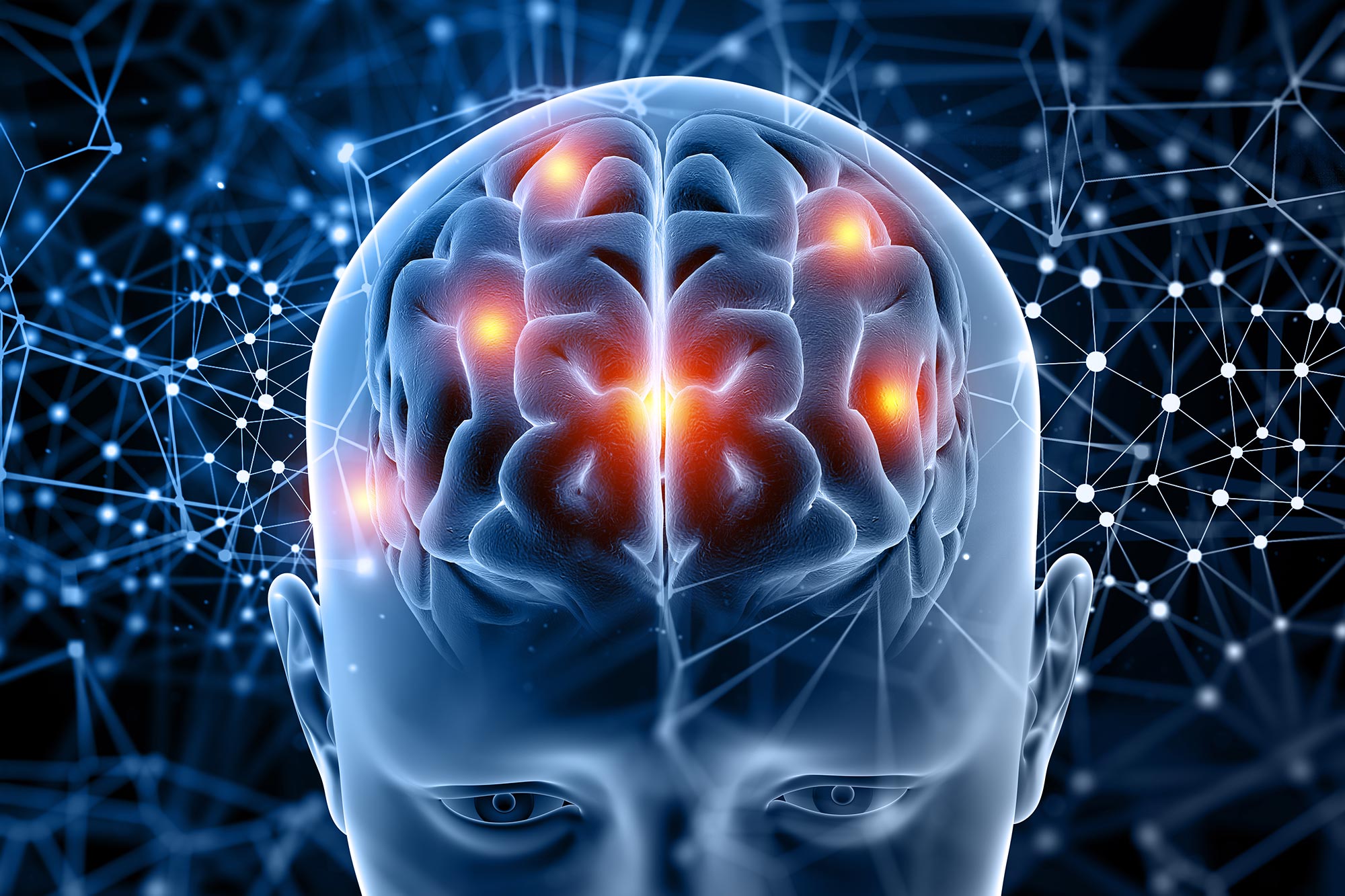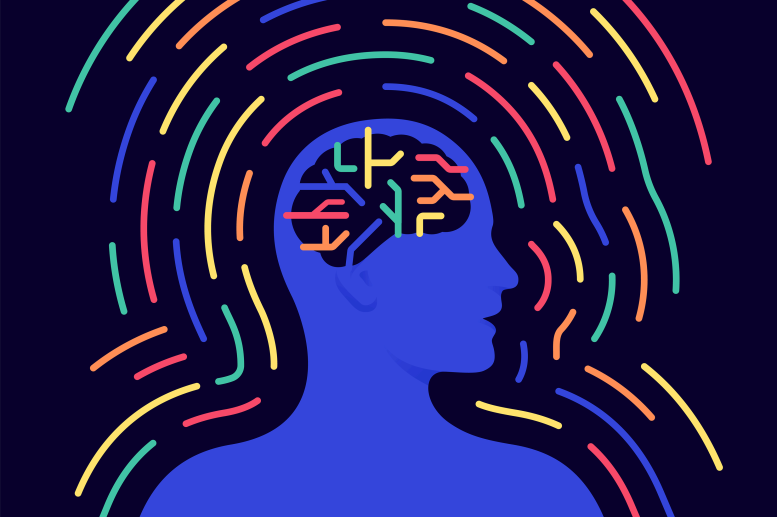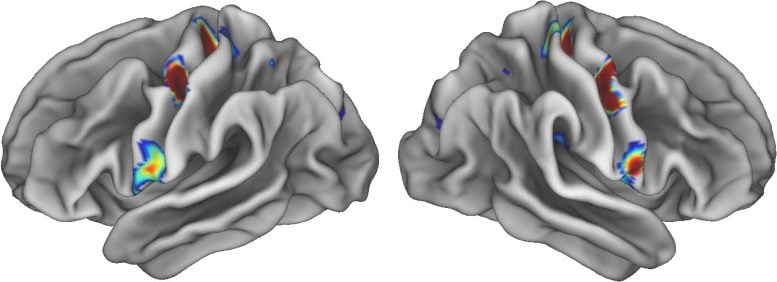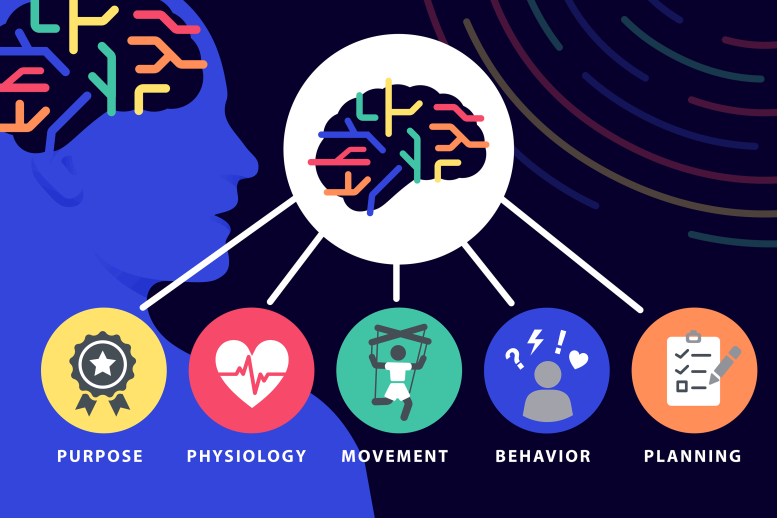
Researchers have discovered a connection between the brain areas controlling movement and those involved in thinking, planning, and involuntary bodily functions like blood pressure and heartbeat. The findings suggest a literal linkage between body and mind in the brain’s structure. Researchers named this newly identified network the Somato-Cognitive Action Network (SCAN). This study may help explain phenomena such as anxiety-induced pacing, the effects of vagus nerve stimulation on depression, and the positive outlook reported by regular exercisers.
Findings point to brain areas that integrate planning, purpose, physiology, behavior, and movement.
Calm body, calm mind, say the practitioners of mindfulness. A new study by researchers at Washington University School of Medicine in St. Louis indicates that the idea that the body and mind are inextricably intertwined is more than just an abstraction. The study shows that parts of the brain area that control movement are plugged into networks involved in thinking and planning, and in control of involuntary bodily functions such as blood pressure and heartbeat. The findings represent a literal linkage of body and mind in the very structure of the brain.
The research, published on April 19 in the journal Nature, could help explain some baffling phenomena, such as why anxiety makes some people want to pace back and forth; why stimulating the vagus nerve, which regulates internal organ functions such as digestion and heart rate, may alleviate depression; and why people who exercise regularly report a more positive outlook on life.

A new study by researchers at Washington University School of Medicine in St. Louis reveals that a connection between the body and mind is built into the structure of the brain. The study shows that parts of the brain area that controls movement are plugged into networks involved in thinking and planning, and in control of involuntary bodily functions such as blood pressure and heart rate. Credit: Sara Moser/Washington University
“People who meditate say that by calming your body with, say, breathing exercises, you also calm your mind,” said first author Evan M. Gordon, PhD, an assistant professor of radiology at the School of Medicine’s Mallinckrodt Institute of Radiology. “Those sorts of practices can be really helpful for people with anxiety, for example, but so far, there hasn’t been much scientific evidence for how it works. But now we’ve found a connection. We’ve found the place where the highly active, goal-oriented ‘go, go, go’ part of your mind connects to the parts of the brain that control breathing and heart rate. If you calm one down, it absolutely should have feedback effects on the other.”
Gordon and senior author Nico Dosenbach, MD, PhD, an associate professor of neurology, did not set out to answer age-old philosophical questions about the relationship between the body and the mind. They set out to verify the long-established map of the areas of the brain that control movement, using modern brain-imaging techniques.
In the 1930s, neurosurgeon Wilder Penfield, MD, mapped such motor areas of the brain by applying small jolts of electricity to the exposed brains of people undergoing brain surgery, and noting their responses. He discovered that stimulating a narrow strip of tissue on each half of the brain causes specific body parts to twitch. Moreover, the control areas in the brain are arranged in the same order as the body parts they direct, with the toes at one end of each strip and the face at the other. Penfield’s map of the motor regions of the brain — depicted as a homunculus, or “little man” — has become a staple of neuroscience textbooks.

Three colored spots on each half of the brain illuminate special areas in the movement areas of the brain that connect to areas involved in thinking, planning and control of basic bodily functions such as heart rate. The hotter the color, the denser the connections. Researchers at Washington University School of Medicine in St. Louis say that these sites represent a nexus between the body and the mind. Credit: Evan Gordon/Washington University
Gordon, Dosenbach and colleagues set about replicating Penfield’s work with functional magnetic resonance imaging (fMRI). They recruited seven healthy adults to undergo hours of fMRI brain scanning while resting or performing tasks. From this high-density dataset, they built individualized brain maps for each participant. Then, they validated their results using three large, publicly available fMRI datasets — the Human Connectome Project, the Adolescent Brain Cognitive Development Study and the UK Biobank — which together contain brain scans from about 50,000 people.
To their surprise, they discovered that Penfield’s map wasn’t quite right. Control of the feet was in the spot Penfield had identified. Same for the hands and the face. But interspersed with those three key areas were another three areas that did not seem to be directly involved in movement at all, even though they lay in the brain’s motor area.
Moreover, the nonmovement areas looked different than the movement areas. They appeared thinner and were strongly connected to each other and to other parts of the brain involved in thinking, planning, mental arousal, pain, and control of internal organs and functions such as blood pressure and heart rate. Further imaging experiments showed that while the nonmovement areas did not become active during movement, they did become active when the person thought about moving.

A link between body and mind is embedded in the structure of our brains, and expressed in our physiology, movements, behavior and thinking, as depicted in this artistic interpretation of a new study by researchers at Washington University School of Medicine in St. Louis. The researchers discovered what they have named the Somato (body)-Cognitive (mind) Action Network, or SCAN. Credit: Sara Moser/Washington University
“All of these connections make sense if you think about what the brain is really for,” Dosenbach said. “The brain is for successfully behaving in the environment so you can achieve your goals without hurting or killing yourself. You move your body for a reason. Of course, the motor areas must be connected to executive function and control of basic bodily processes, like blood pressure and pain. Pain is the most powerful feedback, right? You do something, and it hurts, and you think, ‘I’m not doing that again.’”
Dosenbach and Gordon named their newly identified network the Somato (body)-Cognitive (mind) Action Network, or SCAN. To understand how the network developed and evolved, they
scanned the brains of a newborn, a 1-year-old and a 9-year-old. They also analyzed data that had been previously collected on nine monkeys. The network was not detectable in the newborn, but it was clearly evident in the 1-year-old and nearly adult-like in the 9-year-old. The monkeys had a smaller, more rudimentary system without the extensive connections seen in humans.
“This may have started as a simpler system to integrate movement with physiology so that we don’t pass out, for example, when we stand up,” Gordon said. “But as we evolved into organisms that do much more complex thinking and planning, the system has been upgraded to plug in a lot of very complex cognitive elements.”
Clues to the existence of a mind-body network have been around for a long time, scattered in isolated papers and inexplicable observations.
“Penfield was brilliant, and his ideas have been dominant for 90 years, and it created a blind spot in the field,” said Dosenbach, who is also an associate professor of biomedical engineering, of pediatrics, of occupational therapy, of radiology, and of psychological & brain sciences. “Once we started looking for it, we found lots of published data that didn’t quite jibe with his ideas, and alternative interpretations that had been ignored. We pulled together a lot of different data in addition to our own observations, and zoomed out and synthesized it, and came up with a new way of thinking about how the body and the mind are tied together.”
Reference: “A somato-cognitive action network alternates with effector regions in motor cortex” by Evan M. Gordon, Roselyne J. Chauvin, Andrew N. Van, Aishwarya Rajesh, Ashley Nielsen, Dillan J. Newbold, Charles J. Lynch, Nicole A. Seider, Samuel R. Krimmel, Kristen M. Scheidter, Julia Monk, Ryland L. Miller, Athanasia Metoki, David F. Montez, Annie Zheng, Immanuel Elbau, Thomas Madison, Tomoyuki Nishino, Michael J. Myers, Sydney Kaplan, Carolina Badke D’Andrea, Damion V. Demeter, Matthew Feigelis, Julian S. B. Ramirez, Ting Xu, Deanna M. Barch, Christopher D. Smyser, Cynthia E. Rogers, Jan Zimmermann, Kelly N. Botteron, John R. Pruett, Jon T. Willie, Peter Brunner, Joshua S. Shimony, Benjamin P. Kay, Scott Marek, Scott A. Norris, Caterina Gratton, Chad M. Sylvester, Jonathan D. Power, Conor Liston, Deanna J. Greene, Jarod L. Roland, Steven E. Petersen, Marcus E. Raichle, Timothy O. Laumann, Damien A. Fair and Nico U. F. Dosenbach, 19 April 2023, Nature.
DOI: 10.1038/s41586-023-05964-2
Gordon EM, Chauvin RJ, Van AN, Rajesh A, Nielsen A, Newbold DJ, Lynch CJ, Seider NA, Krimmel SR, Scheidter KM, Monk J, Miller RL, Metoki A, Montez DF, Zheng A, Elbau I, Madison T, Nishino T, Myers MJ, Kaplan S, Badke D’Andrea C, Demeter DV, Feigelis M, Ramirez JSB, Xu T, Barch DM, Smyser CD, Rogers CE, Zimmermann J, Botteron KN, Pruett JR, Willie JT, Brunner P, Shimony JS, Kay BP, Marek S, Norris SA, Gratton C, Sylvester CM, Power JD, Liston C, Greene DJ, Roland JL, Petersen SE, Raichle ME, Laumann TO, Fair DA, Dosenbach NUF. A Somato-Cognitive Action Network alternates with effector regions in motor cortex. Nature. April 19, 2023. DOI: 10.1038/s41586-023-05964-2
This work was supported by the National Institutes of Health (NIH), grant numbers NS110332, MH120989, MH100019, MH129493, MH113883, MH128177, EB031765, DA048742, MH120194, NS123345, NS098482, MH121518, MH128696, NS124789, MH118370, MH118362, HD088125, HD055741, MH121462, MH116961, MH129426, HD103525, MH120194, MH122389, DA047851, MH118388, MH114976, MH129616, DA041148, DA04112, MH115357, MH096773, MH122066, MH121276, MH124567, NS129521, and NS088590; the National Science Foundation, CAREER grant number BCS-2048066; Center for Brain Research in Mood Disorders; Eagles Autism Challenge; the Dystonia Medical Research Foundation; the National Spasmodic Dysphonia Association; the Taylor Family Foundation; Washington University’s Intellectual and Developmental Disabilities Research Center; Washington University’s Hope Center for Neurological Disorders; and Washington University’s Mallinckrodt Institute of Radiology.
Health - Latest - Google News
April 20, 2023 at 03:23PM
https://ift.tt/HWmp0Kd
Hidden Linkages: Scientists Find Mind-Body Connection Is Built Into Brain - SciTechDaily
Health - Latest - Google News
https://ift.tt/85LVRcl

No comments:
Post a Comment